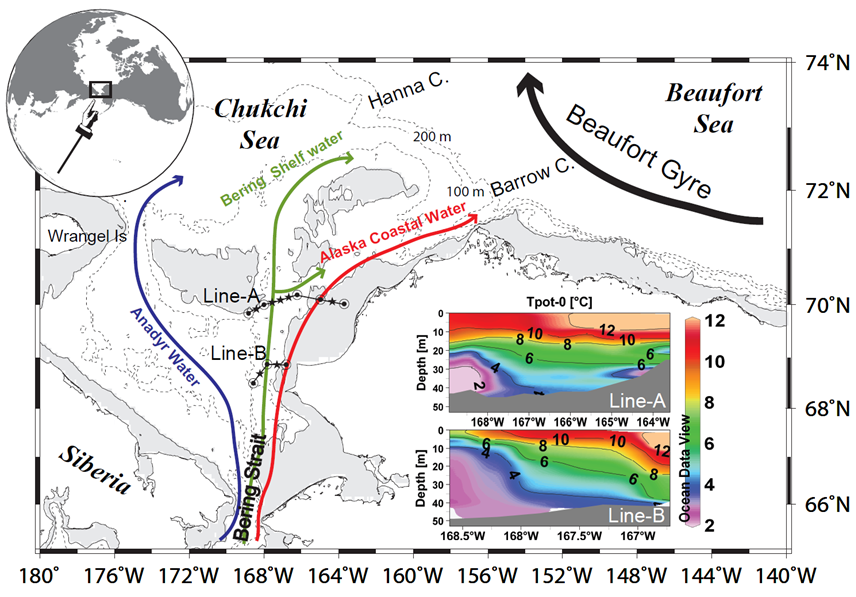Heat flux through Bering Strait
Recent sea ice reduction in the Arctic Ocean is due to the Pacific Summer Water intrusion through Bering Strait and Barrow Canyon (Shimada et al., 2006). Fig. 1 shows the schematics of the oceanic currents flowing into the Western Arctic Ocean.

The transport of Bering Strait is 0.8 Sv (mean) with seasonal variability. Most of ocean-climate models use constant value "0.8Sv", but volume transport increases in summer time, when oceanic water temperature increases. This means, using constant value of 0.8Sv underestimates the heat flux through Bering Strait.
The oceanic heat flux through Bering Strait can be estimated using satellite
altimeter and NCEP wind (Mizobata et al., 2010, Journal of Oceanography)
. In our paper, we developed the multiple regression models to estimate
volume transport and heat flux using altimeter-derived sea level gradient
across the strait, NCEP wind component and sea surface temperature. Updated
volume tranport and heat flux area shown in Figs. 2 and 3, respectively.
Estimated heat flux shows large amount of heat delivered into, at least, the Chukchi Sea between 2004 and 2007. To understand net heat flux into the Arctic Ocean, we still have a question to be addressed. That is the heat flux through Barrow Canyon. Because oceanic heat content may decrease in the Chukchi Sea due to the air-sea heat exchange.
In the NEAR future, we will show results of heat flux estimation through Barrow Canyon.
[Reference]
Mizobata K., K. Shimada et al., "Estimation of Heat Flux through the Eastern Bering Strait" ,Journal of Oceanography Vol.66 pp.405-424,2010
Shimada, K., T. Kamoshida, M. Itoh, S. Nishino, E. Carmack, F. MacLaughlin, S. Zimmermann and A. Proshutinsky (2006): Pacific Ocean inflow: Influence on catastrophic reduction of sea ice cover in the Arctic Ocean. Geophys. Res. Lett., 33, L08605, doi:10.1029/2005GL025624.